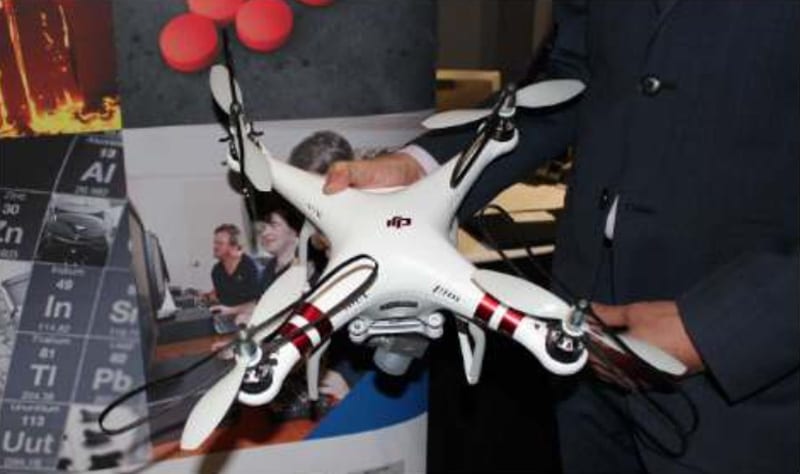
News
This Drone Safety Rotor Will Stop Props to Avoid Injury
Despite the many advantages of propeller-driven quadcopters and their ilk, the risk to those below can’t be ignored should one malfunction while in flight.
While there are many industry-specific drones featuring protection devices such as cages and bumpers – Flyability’s Elios, for example, as well as some toys, they can be either bulky and heavy, or lightweight and too frail to survive many collisions.
Even the high speed at which rotors of hobby and toy drones fly can be extremely dangerous, causing injuries such laceration, finger amputation and vision loss, and as they are toys often involving children.
To address these risks, researchers from the University of Queensland (UQ) have created a cheap and effective drone rotor safety system that is designed with a sensor system which stops rotors from turning and causing damage when they collide with an object.
Presented at ICRA2018 last week, they say this system is an improvement on standard collision avoidance sensors that detect proximity to objects which often have ‘blind spots or short range’.
The system, named ‘Safety Rotor’, consist of a lightweight hoop that can halt the spinning of quadcopter blades in a fraction of a second, using existing structures of the drone’s drive system.
The Safety Rotor was created at the Robotics Design Laboratory in the UQ’s School of Information Technology and Electrical Engineering under the lead of Dr Paul Pounds, who holds several patents for various remote pilot aircraft systems (RPAS) including for the Safety Rotor.
The system itself is so simple it’s wonder nobody else thought of it earlier.

The Safety Rotor | Uniquest
The rotating plastic hoop is driven by friction on the rotor shaft, encasing the blade such that it’s reach is greater than the propeller length.
The speed of the hoop, which is slower than the rotor due to friction, is monitored via an optical sensor.
When a sudden drop in the speed of the hoop is detected, a brake is applied on the rotors – all within only six-hundredths of a second.
As the researchers explained in a video made for the ICRA2018 Spotlight Session, “We employ electrodynamic breaking to help the rotor in powered flight. Applied voltage causes positive current flow of the drive the motor to overcome drag and turn the rotor.
“When the power is disconnected the circuit is open and only aerodynamic drag is applied, however if the motor is short circuited, the back EMF of the motor applies negative current that drives the motor in reverse.”
“The faster the motor spins the more energy is available to stop it,” they explain.
Because the system consists of only pre-existing lightweight mechanical and electronic parts, it will be able to be applied to existing drones without changing their flightweight significantly, and at a very affordable price.
“Together these systems are very light and cheap, adding only 20 grams of weight and $15 of cost per quadrotor,” they say.
The university hopes to commercialise the patented Safety Rotor to an RPAS manufacturing company. With a current market of 2.8million quadcopters sold per year, this simple solution to drone safety surely should be available before next Christmas’ drone invasion!






















